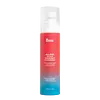What's inside
What's inside
 Key Ingredients
Key Ingredients

 Benefits
Benefits

 Concerns
Concerns

No concerns
 Ingredients Side-by-side
Ingredients Side-by-side

Camellia Sinensis Leaf Extract
AntimicrobialPentylene Glycol
Skin ConditioningPolyglyceryl-10 Laurate
Skin ConditioningDipotassium Glycyrrhizate
HumectantCarbomer
Emulsion StabilisingSodium Phytate
Tromethamine
BufferingPlumeria Alba Flower Oil
Houttuynia Cordata Extract
Skin ConditioningCentella Asiatica Leaf Water
Skin ConditioningTremella Fuciformis Extract
HumectantHypochlorous Acid
AntiseborrhoeicWater
Skin ConditioningAloe Barbadensis Leaf Extract
EmollientPropanediol
Solvent1,2-Hexanediol
Skin ConditioningButylene Glycol
HumectantBetaine
HumectantEthylhexylglycerin
Skin ConditioningPhenoxyethanol
PreservativeAnthemis Nobilis Flower Water
MaskingAllantoin
Skin ConditioningCaffeine
Skin ConditioningTocopherol
AntioxidantGlycerin
HumectantCamellia Sinensis Leaf Extract, Pentylene Glycol, Polyglyceryl-10 Laurate, Dipotassium Glycyrrhizate, Carbomer, Sodium Phytate, Tromethamine, Plumeria Alba Flower Oil, Houttuynia Cordata Extract, Centella Asiatica Leaf Water, Tremella Fuciformis Extract, Hypochlorous Acid, Water, Aloe Barbadensis Leaf Extract, Propanediol, 1,2-Hexanediol, Butylene Glycol, Betaine, Ethylhexylglycerin, Phenoxyethanol, Anthemis Nobilis Flower Water, Allantoin, Caffeine, Tocopherol, Glycerin
 Reviews
Reviews

Ingredients Explained
These ingredients are found in both products.
Ingredients higher up in an ingredient list are typically present in a larger amount.
Glycerin is already naturally found in your skin. It helps moisturize and protect your skin.
A study from 2016 found glycerin to be more effective as a humectant than AHAs and hyaluronic acid.
As a humectant, it helps the skin stay hydrated by pulling moisture to your skin. The low molecular weight of glycerin allows it to pull moisture into the deeper layers of your skin.
Hydrated skin improves your skin barrier; Your skin barrier helps protect against irritants and bacteria.
Glycerin has also been found to have antimicrobial and antiviral properties. Due to these properties, glycerin is often used in wound and burn treatments.
In cosmetics, glycerin is usually derived from plants such as soybean or palm. However, it can also be sourced from animals, such as tallow or animal fat.
This ingredient is organic, colorless, odorless, and non-toxic.
Glycerin is the name for this ingredient in American English. British English uses Glycerol/Glycerine.
Learn more about GlycerinHypochlorous Acid is created from dissolving chlorine in water. It is a weak acid that has antimicrobial properties.
Due to its ability to kill bacteria, it can be used to treat acne. We recommend speaking with a professional if you have any concerns or questions.
Fun fact: Hypochlorous acid naturally exists in our bodies. It is created by white blood cells to protect us from infections and bacteria.
Learn more about Hypochlorous AcidWater. It's the most common cosmetic ingredient of all. You'll usually see it at the top of ingredient lists, meaning that it makes up the largest part of the product.
So why is it so popular? Water most often acts as a solvent - this means that it helps dissolve other ingredients into the formulation.
You'll also recognize water as that liquid we all need to stay alive. If you see this, drink a glass of water. Stay hydrated!
Learn more about Water